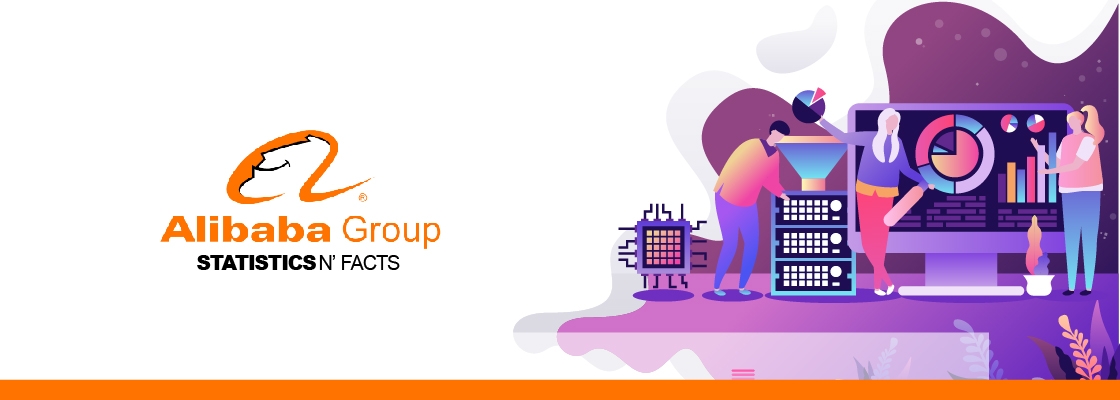Apparel Industry Statistics: Apparel can be used to protect the body from the environment and enhance the wearer’s appearance. The apparel industry is one of the essential industries in the world. It is responsible for the production of clothing and other textile products. The industry employs millions worldwide and generates billions of dollars annually. Clothing is an essential part of the daily lives of many people. It also plays a significant role in the cultures of different countries and regions worldwide. The apparel market has changed significantly over time and will continue to change in the future. The apparel industry is one of the largest industries in the world today and is constantly growing.
Overview
In the beginning, clothing was meant to protect the body from adverse environmental conditions. As the wheel of time began to spin, people became more curious about their lifestyles, and new trends emerged. Owing to rapid changes in the living patterns of individuals, fashionable garments were produced. This has established the demand for new varieties of clothes, creating the apparel industry.
The apparel industry manufactures finished clothing, such as children’s and men’s, and women’s clothing. Apparel manufacturing is one of today’s growing businesses and has never-ending demand. Every day this industry gets new trends that boost the demand for a particular product, creating opportunities for the present. As such, apparel manufacturers need to grow their businesses to stay competitive. So that they can remain competitive in the apparel market, manufacturers must consider factors such as short product lives, volatile fashions, and unpredictable market trends.
The apparel industry is a vital part of developing a country’s economy, both in terms of revenue generation as well as the creation of jobs. Due to the high level of price competition and global sourcing, the industry is experiencing a dramatic shift. Positive demographic factors, rising disposable incomes, changes in consumer behavior, and a shift towards branded apparel have all contributed to a positive increase in the global apparel market.
The apparel industry includes companies producing, supplying, or manufacturing apparel for different purposes. The global apparel manufacturing industry has several established companies that produce men’s, children’s, and women’s apparel. This industry includes both manufacturers who purchase fabrics as well as who themselves manufacture fabrics.
Market’s Role in the Economy
The apparel industry designs and manufactures clothing and accessories for men, women, and children. It includes categories such as casual wear, activewear, and essentials. Designers and manufacturers are increasingly incorporating sustainable, organic, and green features into the clothing they produce and distribute. Mass retailers are already giving shelf space to these clothes. This is a sign of a growing trend in the apparel industry. While consumer preferences and demand are the main drivers of the apparel industry’s growth, manufacturing costs also play a role.
This industry’s profitability is heavily dependent on many factors, including the concentration given to specific locations, specialization in products, the efficiency of operations, contracts with marketing professionals, and contracts with them. Apparel companies often form alliances to stand out against the stiff competition. Apparel companies can generate more revenue by using successful advertising strategies and concentrating on niche markets. Retailer activities in apparel include more than just sales.
They also include marketing, merchandising, and inventory management. The adoption of new fashion and increased consumer disposable income are the key factors that drive this industry’s growth. The apparel industry tends to update its products quickly to maintain its roots in the market. Apparel companies must also adapt their products to meet consumer demand and trends. Due to consumer demand, apparel companies must produce and distribute clothing faster than usual. For example, they may produce clothing made from recycled materials or incorporate electronic functions such as miniature lights.
More in the Economy
Apparel manufacturers are now more focused on marketing and branding their products. A product with a brand name is more attractive in the marketplace. A branded product requires less effort to market because consumers are increasingly inclined toward buying branded products. Some firms look to merge with other companies to remain competitive in the market. Other than production, other firms may also enter other functions, such as warehousing or entering the retail market. Computer-aided design systems are also helpful in the circulation of new fashions around the world. The apparel industry has been able to adapt to the changing market’s behavior and offer trendy garments at a reasonable price, thanks to these technological advances.
Several small, medium-sized, and large brands are booming at the national or regional level. The distribution channels can be broken down into stationary suppliers of multi-label products such as departmental or traditional specialty stores and vertically integrated textile chains such as H&M and Primark. Some fashion brands also prefer direct contact with customers via single-label shops.
Global apparel is expected to continue growing at a steady pace. In 2026, the global apparel market will generate nearly two trillion dollars. Global trade, employment, and revenue are all dependent on the apparel industry. This industry is known for its short product life cycles and high product differentiation. It also has a slow pace of change and requires a lot of work to keep its market share. Retailers need to keep creating new styles and more versatile apparel for consumers.
Employment & Trading
The leading supplier of clothes & apparel, China accounts for over 40% of global exports. Europe, as a bloc, accounts for nearly 20% of global clothing exports after china. Europe employed around 9.2 million people in the production of clothing. When you consider garment employment in Asia, this number is negligible. In 2019, 65 million people were employed in the garments sector of Asia. Half of them were accounted for by women employees. In South Asia, employment within the garment sector made up 4.3% of all. Although the garment manufacturing industry plays a significant economic role in Asian countries’ economies, the working conditions are not fair.
The COVID-19 pandemic, which affected many Asian countries, led to many workers’ poor working conditions. Many retailers canceled or reduced orders, which resulted in many workers being unable to receive their total wages or being laid off. A recent study into the wages of garment workers in Asia revealed that the basic wage for a garment worker was, on average, 95 U.S. Dollars in Bangladesh. According to the same study, more than 700,000. Job losses occurred in India since March 2020, when the pandemic began.
The scenario of the Apparel Industry
The United States and China have the largest apparel markets in the world in terms of revenue. As of 2021, the revenue from the United States apparel market was approximately 318 billion U.S. Dollars. Leading retailers like TJX or Macy’s brought in more than 20 billion U.S. dollars in sales. Specialty store-based retailing was worth more than 300 billion U.S. Dollars in 2021.
E-commerce generated over 180.5 million U.S. dollars in revenue in the same year. The e-commerce market in retail goods will continue to grow as the internet influences economic and social activities. Despite this, the U.S. apparel industry has seen a rapid decline in employment over the past few decades. Many manufacturing industries have moved to other areas to find cheaper labor.
Europe is one of the leading producers of apparel. The apparel industry is the most valuable and growing industry in European countries. The United Kingdom and Germany are the leading markets for this industry. Germany’s clothing retail and textile have generated an ever-increasing number of revenue figures over the past ten years.
Most Valuable Clothing Brands Worldwide in 2022
Brand value of the leading 10 apparel brands in 2022 globally (in millions of US$)
This statistic displays the brand values of the top apparel brands as of 2022. Zara was the second-most valuable clothing brand in the world, with a brand worth approximately 25.4 billion US$ in 2022.
Value of the Leading Global Apparel Brands 2022
Value of the leading 10 apparel brands worldwide in 2022 (in million US$)
This statistic displays the global value of the top ten apparel brands in 2022. Nike was the number one apparel brand with a brand worth 33.18 billion U.S. Dollars in 2022.
Value of the Global Apparel Market 2011-2020
This statistic depicts the market value for apparel globally. In 2017, the market value was 1,391 Bn USD and it has generated approx. 1,653 Bn U.S. Dollar IN 2020.
Global Apparel Market Growth 2012-2020
In 2017, it was estimated that the market for apparel grew by 5.46% as compared to the previous year. Further in 2020, it grew by 6.2%.
Leading Apparel Companies:
Christian Dior SE
Christian Dior SE plays a vital role in the Apparel industry. It is also known by the brand name Dior and engages in fashion, beauty, and apparel design. Its luxurious products include fashion accessories, apparel, leather bags, shoes, wines & spirits, perfumes, cosmetic products, watches, and jewelry. Several business units operate under this company. Christian Dior founded the company in the year 1946. It is headquartered in Paris, France.
H&M Group
Hennes & Mauritz, shortly after H&M, is a major fashion retailer in the clothing, accessories, and footwear sectors. Accessories, underwear, and cosmetics are some of its products. The company offers its brand through H H&M, H&M Home, Weekday, COS, & Other Stories, Monki, ARKET, Afound, Sellpy, and Treadle. It is geographically present in Asia, Oceania, Africa, North America, South America, Europe, and Africa. H&M was headquartered in Stockholm, Sweden, and was established in 1947.
Adidas AG
Adidas AG was the fourth largest apparel brand in the world as of 2021. It had a brand value exceeding 16.5 billion U.S. Dollars. Therefore, it’s not surprising that Adidas is one of the most valued footwear, apparel, and accessories companies. Based on customer satisfaction ratings, Adidas has surpassed Nike and other global brands of athletic footwear over the years. Adidas recently surpassed Nike in terms of customer satisfaction with a score of just 79 out of 100. Adidas AG was established in 1949 on 18 August. The company is headquartered in Herzogenaurach, Germany.
Upcoming Trends in The Global Apparel Industry
The global fashion industry has become more challenging and competitive. Some of the most notable trends in the apparel industry are that larger apparel companies are adopting new strategies to increase their product portfolio, strategic partnerships, and acquisitions. This includes collaboration with technology companies and adopting automation to manufacture high-quality clothes.
Several companies are contributing to the apparel industry’s development by using robotics and automation to lower production costs and improve quality, using natural materials and 3D knitting machines to decrease manufacturing costs. The world’s leading apparel companies are using digital tools to manage their consumer data, connect with social media influencers, tap into each consumer’s needs, and facilitate digital experiences both online and in-store.
Facts & Figures
- In 2022, the apparel market is expected to generate US$ 364.20 bn. The annual CAGR for the years 2022-2026 is 4.15%.
- In 2022, women’s apparel will be the market’s largest segment, with a market size of US$ 188.80 bn.
- Globally, as compared to other regions, the United States will generate the highest revenue of US$ 312 Bn in 2022.
- In 2022, per capita revenues of US$ 721.60 were generated compared to the total population figures.
- By 2026, volume in the apparel market is expected to reach 37,769.1m pcs. In 2023, the apparel market will experience a 9.5% volume growth.
- In 2022, the average apparel market volume/person is expected to as 65.2 pieces.
- Non-Luxury products will account for 95% of the apparel market’s sales by 2022.








